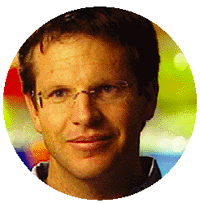 |
||||
Keynote Conversation: "Strategic Partnerships" "Think Big, Start Small, Act Now"EE campaigns often involve many partners, including donors and audiences. Partners often come to projects with their own agendas, and it is up to campaign coordinators to ensure balance and harmony. To illuminate this dialectic, Garth Japhet (South Africa) and Phyllis Piotrow (USA) presented two cases in this session chaired by Martine Bouman of the Netherlands EE Foundation. Building a Brand NameProject Director Japhet explained that Soul City is a South African NGO established in 1992 to harness "the power of mass media to support health and development." Today, the project reaches more than 70% of the South African population and is used by 10 other African nations. Soul City does not focus on one particular social issue, but instead uses the brand name to raise awareness on various topics, including mother and child health, HIV/ AIDS, smoking, and gender-based violence. Messages are conveyed through a weekly prime time TV drama, a radio drama broadcast in nine languages, and color pamphlets inserted in 10 newspapers. Partnerships Key to SuccessAccording to Japhet, partnerships are the key to an EE campaign's success. Furthermore, he said, partnerships should be based on a win-win situation. Media gatekeepers, key interest groups, donors, and the creative team should together create possibilities from which they can all profit. We should also not forget "to see the audience as a partner rather than a goal," said Japhet.
Funding Sources and NetworkingPiotrow spoke of the partnerships between the different parties involved in EE. Besides performers and producers, donors are important partners, she said. She then turned her attention to fundraising for EE. Sponsoring can be provided by government ministries, as well as by international organizations such as the United Nations. Commercial sponsors could be another important source of funding. EE professionals should concentrate not only on what is needed, but also on what can be offered to partners. Contacts need to be made with various media in order to implement a project. Again, it is important to demonstrate the value of the program to them. When considering this partnership between the entertainment industry and educators, problems concerning the content of the program could arise. A related issue is the degree of emphasis on entertainment versus education. Entertainment Versus Educational ContentCurrently, it is generally agreed that the balance between entertainment and education should be in favor of the entertainment. Some suggest that 70% of the content should focus on entertainment and 30% on education, while others opt for a 60/ 40 division. But the real point is not an arbitrary distinction between the two; they need to be totally merged. It is not surprising that the division of costs and distribution of the product can also be a cause of friction. To prevent arguments based on credits, acknowledging all participants will usually avoid friction in this area. Keeping the donor interested is another important factor in the process, as donor fatigue is a rather common problem. Most Important Strategic PartnersThe discussion then moved to strategic partners in EE projects. Japhet said that the most strategic partner for Soul City is a leading South African newspaper. This choice was determined by the newspaper's credibility and the fact that the editor is influential in media circles. According to Piotrow, the most valuable partner for JHU/ CCP is the U. S. Agency for International Development, which is a longterm partner that has funded many projects.
Sophia Chaudhury (Bangladesh) shared her views on the importance of commercial partners. In their project, a commercial partner smoothed relations between educators and writers, who both had their predetermined views about the project. Participants agreed with her observation that, in general, a relationship with the audience is most valuable for any EE campaign. Finding BalanceFinally, participants agreed that EE involves many parties and many partnerships, any of which could cause friction because of conflicting agendas. But as in any partnership, EE involves give and take. EE professionals find themselves struggling to find balance, trying to satisfy the needs of all parties. Piotrow concluded the session with an encouraging call: "Think big, start small, act now. Give everybody credit. Never wait to be invited, just go!" |
![]()


 For
the EE project on family planning in Jordan, the Ministry of Islamic
Affairs has definitely been the most important partner, said Lina
Qardan (Jordan). Because most Jordanian citizens consult Islamic
religious rules for most decisions in their lives, gaining the
support of religious leaders in that country was crucial for the
project's success.
For
the EE project on family planning in Jordan, the Ministry of Islamic
Affairs has definitely been the most important partner, said Lina
Qardan (Jordan). Because most Jordanian citizens consult Islamic
religious rules for most decisions in their lives, gaining the
support of religious leaders in that country was crucial for the
project's success.